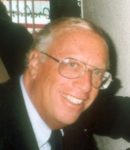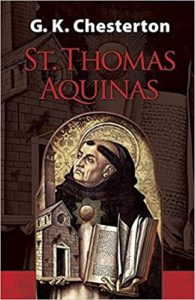
 BOCA RATON, Florida — Saint Thomas Aquinas was authored by G. K. Chesterton, whose output includes both fiction and nonfiction books, including the famous Father Brown murder mysteries. Chesterton wrote this comparatively short history of the Italian Roman Catholic saint who was canonized in 1323. Aquinas’ teachings became the official teachings of Catholicism in 1917.
BOCA RATON, Florida — Saint Thomas Aquinas was authored by G. K. Chesterton, whose output includes both fiction and nonfiction books, including the famous Father Brown murder mysteries. Chesterton wrote this comparatively short history of the Italian Roman Catholic saint who was canonized in 1323. Aquinas’ teachings became the official teachings of Catholicism in 1917.
Chesterton describes Thomas Aquinas (1225-1274) as “a huge heavy bull of a man, fat and slow and quiet.” He was not sociable. Although he was generally a rational thinker, he underwent experiences of trance and ecstasy. “He was so fiery and fidgety that the ecclesiastics before whom he appeared quite suddenly thought he was a madman.” His teachers “thought he was a dunce.” He “loved books and lived on books.”
His hero was the rational thinker Aristotle whom he called “the philosopher,” and about whom he wrote commentaries. He taught such rational ideas as sin is a word or deed or desire that is contrary to natural law. But he adhered to the somewhat mystical ideas of the Roman Catholic Church. Among much else, he believed in the trinity, the existence of angels and demons, the ultimate union with God after death, and resurrection of the dead – the revival of the decomposed body with the soul, all ideas that rationalists reject. He did not follow a rational idea to its end, but at a point in his rational thinking he swerved aside and accepted Church teaching.
I have a question, not discussed by Chesterton.
Was Aquinas a philosopher or theologian? Most people never ask if what they hear is philosophy or theology. There is a big difference. Aquinas was like Descartes (1596-1650), who strived to be a rational thinker. For example, he claimed that he would only accept verifiable concepts that led him to develop his well-known idea that the basic provable reality is “I think, therefore I am.” People, he said, can prove their existence, that they are alive, by the fact that they are thinking. But he accepted Catholic non-philosophical ideas. The two men were mixtures of both.
I understand that philosophy is the search for the truth. Ideas are developed from what is sensed by the five senses, proven scientific findings, or logic. A Jewish philosopher, for example, first tries to find the truth and then see if the finding is reflected in the Torah. This was the method of the rational Maimonides (1138-1204). He was also impressed by Aristotle’s logic and based his thinking upon what is logical. Then he showed that the Aristotelian teaching is in the Torah. For example, Aristotle’s basic idea is that what distinguishes humans from animals and inanimate objects is intelligence. Aristotle stressed that if people want to be human, they must develop their intelligence, and the best way to do so is through the study of science. After understanding and accepting this basic idea, Maimonides found it reflected in the biblical concept that humans are created in God’s image (in his Guide of the Perplexed 1:1). Another example is whether God needs sacrifices. Starting from logic, Maimonides reasoned that God is perfect, has all that is needed, and gains nothing from sacrifices. Therefore, he taught that God neither needs nor wants sacrifices, but allowed them as a concession to the Israelites who saw other nations offering sacrifices and wanted to use sacrifices to worship and show their love of God (Guide of the Perplexed 3:32).
Theology takes the opposite approach. Theologians are interested in explaining the Bible or a religious concept. They begin with their understanding of what the Bible is teaching and try to support it or rationalize it by their logic. Thus, they see that the Torah spends pages discussing sacrifices and conclude that God wants them. Another example is the general population’s belief that God can appear to people though “His Shekhinah.” This idea is problematical because it smacks of polytheism. It seems to say that there is God and there is a manifestation of God, two separate divine beings. It is also problematical because it assumes that God needs a helper. Saadiah Gaon (882-942), a theologian, began his thinking not with logic but with accepting the existence of a Shekhinah. He resolved the problem by saying that the Shekhinah is not a separate being, but a light that God creates and causes to appear to people. Maimonides disliked the theological approach. It answered the first problem but not the second. Maimonides suggested that there is no being called Shekhinah. The concept of the existence of a Shekhinah is not in the Bible, but invented by the rabbis. Maimonides said that when the rabbis spoke of the Shekhinah, they meant a “human feeling” of the presence of God. Saadiah developed his theological response because he wanted to explain what he felt was a Jewish concept. Starting instead from logic, Maimonides rejected this notion of the masses.
Thomas Aquinas was certainly an important thinker for the Roman Catholic Church. I respect him and agree with many of his ideas. But he wasn’t an unadulterated philosopher. He combined philosophy and theology.
*
Rabbi Dr. Israel Drazin is a retired brigadier general in the U.S. Army chaplains corps and the author of more than 50 books.